CPT code 97606: Billing, Reimbursement, and Best Practices for Negative Pressure Wound Therapy
negative pressure wound therapy, > 50 cm².
Top Healthcare payers for CPT Code

UnitedHealth
113
Medicare
122
BCBS
135

PTs should use: 97161–97163 (Evaluations) 97164 (Re-Evaluations)
Introduction
In the intricate world of medical billing and coding, precise documentation is paramount. CPT code 97606 plays a crucial role in the management of complex wounds, specifically those requiring specialized interventions. This code represents a significant advancement in wound care, enabling healthcare providers to deliver targeted therapies and improve patient outcomes.
What is CPT Code 97606?
CPT Code 97606 is a medical billing code used for negative pressure wound therapy (NPWT), also known as vacuum-assisted closure (VAC) therapy. This treatment is applied to wounds to promote healing by removing excess fluid, reducing swelling, and improving blood flow to the affected area. NPWT is especially beneficial for chronic and non-healing wounds that require advanced wound care techniques to prevent infection and facilitate tissue regeneration.
Definition and Purpose
CPT Code 97606 specifically covers NPWT provided using a durable medical equipment (DME) device on wounds with total surface areas greater than 50 square centimeters. This therapy plays a crucial role in wound management, helping to accelerate the healing process, minimize complications, and enhance overall patient outcomes. NPWT works by creating a controlled vacuum environment that draws out fluids, increases blood flow, and reduces bacterial colonization in the wound bed.
Importance of CPT Code 97606 in Medical Billing and Coding
CPT Code 97606 ensures healthcare providers receive reimbursement for advanced wound care services. Given the complexity and cost associated with NPWT, accurate coding, and proper documentation are critical for securing insurance approvals and minimizing claim denials. Understanding the correct use of this code allows medical professionals to provide necessary treatments while maintaining compliance with insurance policies and healthcare regulations.
Common Medical Conditions Treated with CPT Code 97606
- Diabetic foot ulcers
- Pressure ulcers (bedsores)
- Post-surgical wounds
- Traumatic wounds
- Venous stasis ulcers
- Burns requiring specialized wound care
Who Can Bill CPT Code 97606?
Healthcare Professionals Eligible to Use This Code
- Physicians (MDs, DOs)
- Wound care specialists
- Podiatrists
- Home health agencies
- Hospital outpatient departments
Settings Where This Code is Applicable
- Hospitals (inpatient and outpatient)
- Wound care clinics
- Skilled nursing facilities (SNFs)
- Home healthcare services
Related CPT Codes with 97606 (Respective Treatments)
Codes Frequently Billed Together
- 97605– NPWT for wounds ≤ 50 cm²
- 29581 – Application of multi-layer compression bandages
- 11042 – Debridement of wounds involving subcutaneous tissue
Comparison with Similar CPT Codes
Step-by-Step Billing Method for CPT Code 97606
- Verify Patient Eligibility – Confirm the patient’s insurance plan covers NPWT. Check specific payer requirements, including prior authorization and medical necessity criteria.
- Document Medical Necessity – Maintain comprehensive records that include wound size, severity, duration, previous treatments, and physician’s recommendation for NPWT.
- Select the Correct Code – Use CPT 97606 specifically for wounds larger than 50 cm². Incorrectly selecting CPT 97605 for larger wounds can result in claim denials.
- Include Required Modifiers – Apply appropriate Modifiers when needed, such as -59 for distinct procedures performed on different wounds or -KX to confirm compliance with Medicare guidelines.
- Prepare Supporting Documentation – Ensure all relevant clinical notes, wound progress reports, and physician orders are attached when submitting the claim.
- Submit the Claim – Use accurate ICD-10 diagnosis codes that support the medical necessity of NPWT. Double-check for any insurance-specific requirements to avoid processing delays.
- Follow Up on Claims – Track claim status regularly and address any denials or requests for additional information promptly. If a claim is denied, review the payer’s explanation of benefits (EOB) and submit an appeal if appropriate.
Reimbursement Guidelines for CPT Code 97606
Insurance and Medicare/Medicaid Policies
- Medicare covers NPWT if medically necessary and ordered by a physician.
- Private insurers may require prior authorization before approval.
Documentation Requirements for Successful Claims
- Wound size and location
- Clinical justification for NPWT
- Progress reports showing wound healing
- Physician's order for treatment
How to Maximize Reimbursement for CPT Code 97606
Best Practices to Ensure Full Compensation
- Maintain thorough patient records with clear wound measurements
- Use correct ICD-10 codes related to wound etiology
- Follow up on denied claims and submit appeals if necessary
Commonly Approved Modifiers and Documentation Tips
- Modifier -59 – When NPWT is performed on distinct wounds
- Modifier -KX – To confirm compliance with Medicare guidelines
- Ensure proper signatures on treatment plans and physician orders
Case Studies
Real-world examples of CPT Code 97606 in Medical Billing
- Case 1: A patient with a chronic diabetic foot ulcer received NPWT for 8 weeks, leading to successful wound closure and full reimbursement.
- Case 2: A hospital billed CPT 97606 for a patient with severe burns. Due to missing documentation, the claim was initially denied but later approved upon resubmission.
Common Billing Mistakes and How to Avoid Them
Frequent Coding Errors and Claim Denials
- Incorrectly billing CPT 97605 instead of 97606 for large wounds
- Lack of supporting documentation for medical necessity
- Failure to obtain prior authorization when required
Strategies to Prevent Billing Mistakes
- Double-check wound measurements before billing
- Ensure proper modifier usage for different wound sites
- Train billing staff on updated payer policies
Importance of Compliance and Audit Readiness
- Maintain organized patient records
- Stay updated on CMS and insurance policies
- Conduct regular internal audits to identify and correct errors
Conclusion
CPT Code 97606 is essential for billing negative pressure wound therapy on large wounds. Accurate coding, thorough documentation, and adherence to insurance guidelines help ensure successful reimbursement. Understanding the nuances of CPT 97606 can prevent claim denials and enhance compliance in medical billing.
FAQs
1. What is the difference between CPT 97605 and CPT 97606?
CPT 97605 covers NPWT for wounds ≤ 50 cm², while CPT 97606 applies to wounds > 50 cm².
2. Does Medicare cover CPT Code 97606?
Yes, Medicare covers NPWT under specific medical necessity guidelines with proper documentation.
3. Can CPT 97606 be billed with other wound care treatments?
Yes, it is often billed with debridement codes (e.g., 11042) and compression therapy codes (e.g., 29581).
4. What modifiers are commonly used with CPT 97606?
Common modifiers include -59 for distinct wounds and -KX for Medicare compliance.
5. How can I prevent claim denials for CPT 97606?
Ensure proper documentation, accurate wound measurements, and use of the correct ICD-10 and CPT codes.
RVU (Relative Value Unit) Calculator
Calculate NowTake control of your revenue, and grow with SPRY.








.webp)